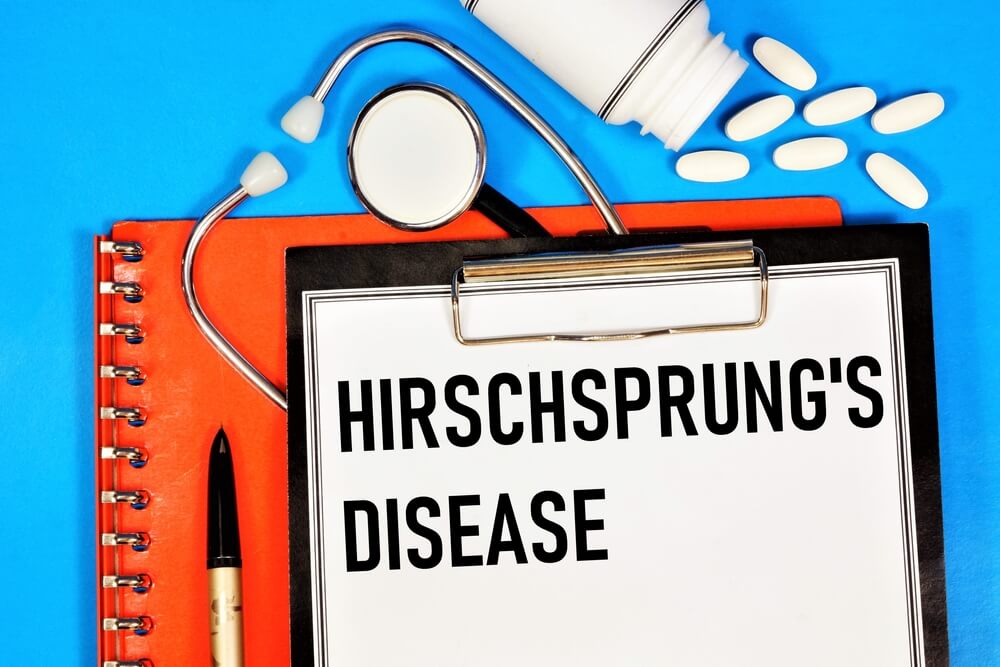Hirschsprung’s disease, also known as congenital aganglionic megacolon, is a rare genetic disorder affecting the large intestine’s nerve cells, leading to difficulties in passing stool. This condition can result in severe constipation and complications, making it essential to understand its symptoms, causes, and treatment options.
In this article, our experts at Worldwide Pediatrics Group will explore Hirschsprung’s disease in-depth and provide insights into managing this condition effectively.
Understanding Hirschsprung’s Disease

Hirschsprung’s disease is characterized by the absence or underdevelopment of nerve cells, known as ganglion cells, in the rectum and, sometimes, parts of the colon. These ganglion cells play a vital role in controlling the movement of stool through the intestines. When these cells are missing, it can lead to the large intestine’s inability to propel stool, resulting in chronic constipation and, in some cases, bowel obstructions.
Symptoms of Hirschsprung’s Disease
The symptoms of Hirschsprung’s disease can vary depending on the affected individual’s age. 80% of children with this condition typically exhibit symptoms in the first six weeks of life. The common symptoms of Hirschsprung’s disease in infants include:
- Failure to Pass Stool: Infants may not have a bowel movement within the first 48 hours of life.
- Abdominal Distension: Swelling or bloating in the abdominal area.
- Gradual Vomiting: Vomiting may occur as a result of the condition.
- Fever: Elevated body temperature may indicate complications like enterocolitis.
- Constipation: Difficulty passing regular bowel movements.
In cases where symptoms do not manifest in the early weeks, older children may exhibit different signs, including:
- Worsening Constipation: Constipation becomes progressively severe.
- Loss of Appetite: Affected children may lose interest in eating, resulting in delayed growth.
- Passing Small, Watery Stools: Stools may become smaller and watery.
- Abdominal Distension: Bloating of the abdomen.
Causes of Hirschsprung’s Disease or Congenital Aganglionic Megacolon
Hirschsprung’s disease is a complex condition with a multifaceted etiology. While the exact cause of the disease remains elusive, researchers have made significant strides in understanding the factors that contribute to its development. Here, we delve into these contributing factors to shed light on the intricate nature of this condition.
Genetics – A Key Player
Genetics plays a pivotal role in developing Hirschsprung’s disease, especially when the disorder affects longer segments of the intestine. This congenital disorder often has familial patterns, which can run in families. If one of the parents has Hirschsprung’s disease, the chances of their child inheriting the condition significantly increase.
When a parent has Hirschsprung’s disease, the risk of having a child with the condition is elevated. Studies indicate that in families where one child is affected by Hirschsprung’s disease, there is a 3 to 12 percent chance that another sibling born to the same parents will also have the disease. This points to a clear genetic component, suggesting that specific genetic factors may predispose individuals to the condition.
However, the genetic mechanisms underlying Hirschsprung’s disease are intricate. Researchers have identified several gene mutations associated with the disease, and the inheritance pattern can be complex. Depending on the specific genes involved, the condition can be inherited autosomal dominant or recessive. This complexity underscores the need for extensive genetic studies to unravel the precise genetic determinants of the disease.
Gender Disparities
One striking feature of Hirschsprung’s disease is its uneven distribution across genders. It occurs significantly more frequently in boys than in girls, with a male-to-female ratio of about 5:1. This gender disparity has puzzled researchers for years. While the exact reasons for this difference are not yet fully understood, it suggests that gender-specific genetic or hormonal factors may be at play in the development of the condition.
The gender imbalance in Hirschsprung’s disease raises intriguing questions about the potential influence of sex chromosomes and hormones in the pathogenesis of the disease. It is a topic that continues to be explored, and future research may unveil valuable insights into the mechanisms underlying gender bias.
The Down Syndrome Connection
Another noteworthy connection in the realm of Hirschsprung’s disease is its increased prevalence among children with Down syndrome. Down syndrome, a genetic disorder caused by the presence of an extra chromosome 21, is already associated with various congenital conditions and health challenges. Hirschsprung’s disease is one such condition that exhibits a higher incidence among children with Down syndrome.
Statistics reveal that Hirschsprung’s disease will also affect approximately 1 in 100 children with Down syndrome. The link between the two conditions may be attributed to shared genetic factors or developmental pathways. Research has suggested that genetic mutations occurring in individuals with Down syndrome might contribute to disrupting normal ganglion cell development in the intestines, thereby increasing the likelihood of Hirschsprung’s disease.
The association between Hirschsprung’s disease and Down syndrome exemplifies the intricate interplay of genetic factors underpinning congenital disorders’ development. It underscores the importance of comprehensive medical care and vigilant screening for children with genetic syndromes like Down syndrome to detect and manage potential comorbidities such as Hirschsprung’s disease promptly.
Diagnosis of Hirschsprung’s Disease
Diagnosing Hirschsprung’s disease typically involves a series of tests to confirm the condition. Common diagnostic tests include:
- Abdominal X-ray: This test can help identify bowel blockages or abnormalities.
- Contrast Enema: A special dye is introduced through the rectum as an enema, providing a clear X-ray image of the large intestine and identifying any irregularities.
- Rectal Biopsy: A sample of rectal tissue is examined under a microscope to determine the presence or absence of ganglion cells and hypertrophic nerve trunks.
While these tests can strongly suggest Hirschsprung’s disease, the definitive diagnosis often requires a biopsy to confirm or rule out the condition.
Treatment for Hirschsprung’s Disease
The primary treatment for Hirschsprung’s disease is surgery. The surgical procedure aims to remove the diseased section of the intestine and pull the healthy portion down to the anus, effectively restoring bowel function. In most cases, these surgeries can be performed with minimally invasive techniques, and some can be done entirely through the anus, leaving no visible scars.
However, it’s important to note that some children may continue to experience issues following surgery. The extent of the unhealthy intestine removed during surgery and the current functioning of the colon, rectum, and anus can influence the post-operative experience.
Potential complications and long-term issues include intractable constipation, diarrhea, stool accidents, recurrent infections (enterocolitis), severe abdominal distension, difficulty tolerating food, vomiting, and growth-related problems.
If children experience ongoing problems after a pull-through procedure, further tests may be necessary to assess the situation. These tests can include anorectal manometry, abdominal X-rays, barium enemas, and rectum or large intestine biopsies.
Management approaches to address these issues can involve medications to regulate stool transit, injections of Botulinum toxin (Botox) into the anal sphincter to relax the muscle, rectal interventions, surgical procedures (including revising previous surgeries), further removal of the abnormal intestine, appendicectomy (a surgical procedure to flush and empty the colon), and bowel management programs.
The Road to Recovery

It’s essential to understand that Hirschsprung’s disease is a complex condition requiring a tailored treatment and care approach. While many children experience substantial improvement in bowel function and overall quality of life following surgery, it is not uncommon for some to face ongoing challenges.
Regular follow-up care with healthcare providers specializing in this condition is crucial to monitoring the child’s progress and addressing any emerging issues. By collaborating with medical experts, parents can ensure the best possible outcomes for their children with Hirschsprung’s disease.
The Reassurance of Specialized Care
A diagnosis of Hirschsprung’s disease can be overwhelming for families. Still, it’s important to recognize that with timely intervention and expert medical care, most children can overcome the challenges associated with the disease.
That said, if you want to learn more about the condition or if you are interested in our services regarding general pediatric care in Plantation and Doral, Florida, feel free to schedule an appointment with us.



